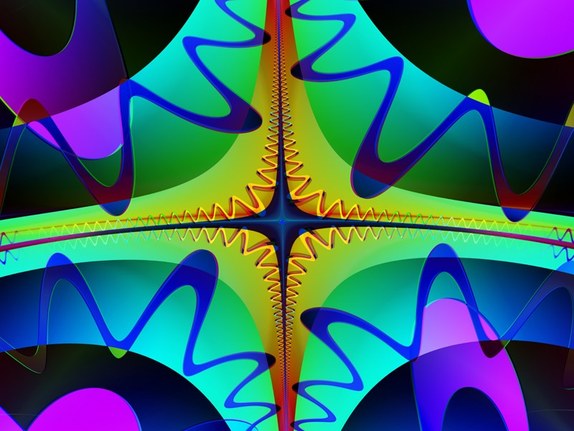What’s the smallest thing you can see? Depending your eyesight; you might see something a tenth of a millimetre across – about the width of a human hair. A microscope lets you see a hundred times smaller, but what about something even smaller? That’s where the good vibrations come in.
Spectroscopy looks at light interacting with matter: shine light in, see what comes back out. The trick is that this works even with things much too small to see in a microscope. In vibrational or ‘Raman’ spectroscopy, shining a laser on a material causes all the different chemical bonds to wobble at a rate depending on the type of bond. Strong bonds vibrate quickly, weaker ones more slowly. Bonds vibrate faster between lighter atoms, more slowly between heavy ones. Bonds can wobble in and out, or side to side. All this vibrating takes energy from the laser, colour-changing the light collected and revealing which bonds they correspond to. The Raman spectrum graphs all these colours of light coming out and is unique to each material.
It’s not exactly a photograph, but this Raman spectrum is good enough to ‘see’ information about things much too small for a microscope. Since it gives information about chemical bonds, it is a great tool to tell us about chemical reactions. Raman spectra from ‘before’ and ‘after’ a reaction says exactly what happened to the material during the reaction and can start to answer questions like: Did the reaction happen? Did the right thing happen? Did it happen everywhere? What happens if we react it for a longer time?
Sometimes we want to encourage chemical reactions to happen faster, like when making fertilisers or making fuel from waste. For these we use a ‘catalyst’, which helps the reaction happen but doesn’t get used up. We are doing research to make these reactions more efficient and environmentally friendly by making new types of catalyst called ‘molecular catalysts’ – these will help us use sunlight to make fuel from gases like CO2.
In order to make the new catalysts even better, we’re using Raman spectroscopy to see what happens during the chemical reaction. We hope to answer questions like: How can I change the catalyst to make the reaction faster? Can I stop the catalyst from breaking? How exactly does the catalyst help the reaction happen?
Using our good vibrations we are learning not just about fundamental interactions with light and matter, but also how to make better catalysts for a greener future.
NanoDTC PhD Student 2016

